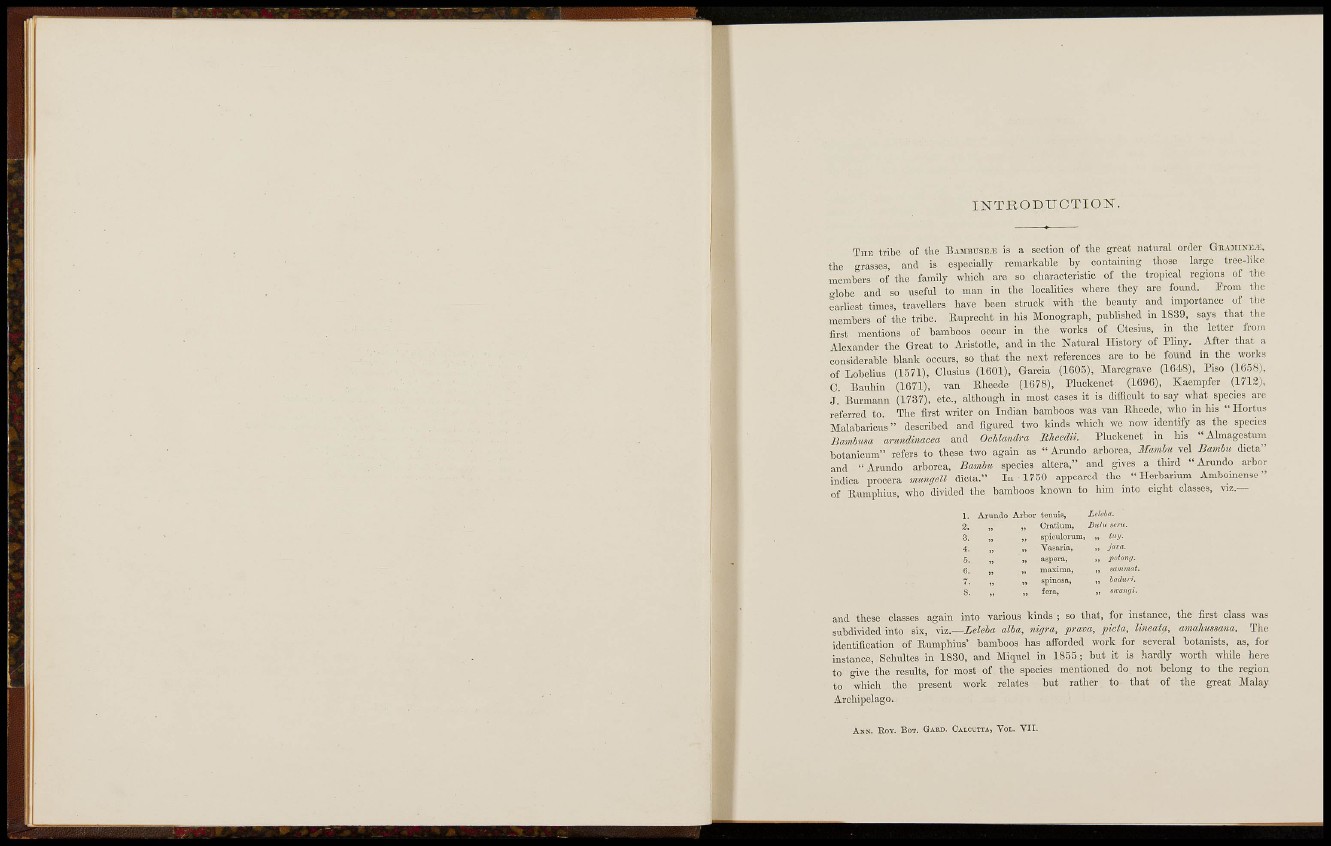
I K T E O D I J C T I O N .
THE tribe of the BAMBTJSJ!-!! is a section of the great natural order G B A J I I X I ! . ®,
the grasses, and is especially remarkable by containing those large tree-like
members of the family which are so characteristic of the tropical regions of the
o-lobe aird so nsefal to man in the localities where they are found. From tlic
L-licst times, travellers have been struck with the beauty and importance of the
members of the tribe. Euprecht in his Monograph, pnbhshed in 1830, says that the
fast mentions of bamboos occur in the works of Ctesius, in the letter from
Alexander the Great to Ai-istotle, and in the Natural History of Pliny. After that a
considerable blank occurs, so that the next references are to be found m the works
of Lobelius (1571), Glusius (1801), Garcia (1005), Marcgrave (1648), Piso (16o8),
C. Bauhin (1671), van Ehecde (1678), Pluckenct (1696), Kaempfer (1712),
J.' Bm-mann (1737), etc., although in most cases it is difficult to say what species are
referred to. The first writer on Indian bamboos was Tan Eheede, who in his " Hortus
Malabaricus" described and figured two kinds which we now identify as the species
Bamhusa, cmmdmaoea and OcUandra Bheedii. Pluckenet in his "Ahnagestum
botanicmn" refers to these two again as "Arundo arborea, Jlamlu TCI Bmniu dicta"
and "Aiundo arborea, Bamlu species altera," and gives a third "Arundo arbor
indica procera mmigdl dicta." In 1750 appeared the "Herbarium Amboinense "
of Emnphius, who divided the bamboos known to liim into eight classes, viz.—
Arundo Axbor tenuis, Leleha.
„ „ (Jratium, Buhi sem.
„ „ spiculorum, „ iu//.
„ „ Tasaría,
„ >, áspera,
„ maxima.
spmosa,
fera,
java,
potofí'j.
sammat.
hadun.
sxcan'ji.
and these classes again into various kinds ; so that, for instance, the first class was
subdivided into six, Viz.^Leleha alba, nigra, prava, picia, Umata, amalmssana. The
identification of Eumphius' hamboos has afforded work for several botanists, as, for
instance, Schultes in 1830, and Miquel in 1855; but it is liardly worth while here
to give the results, for most of the species mentioned do not belong to the region
to which the present work relates but rather to that of the great Malay
Archipelago.
ANN. BOY. BOT. GABD. CALCUTTA» YOL. YII.